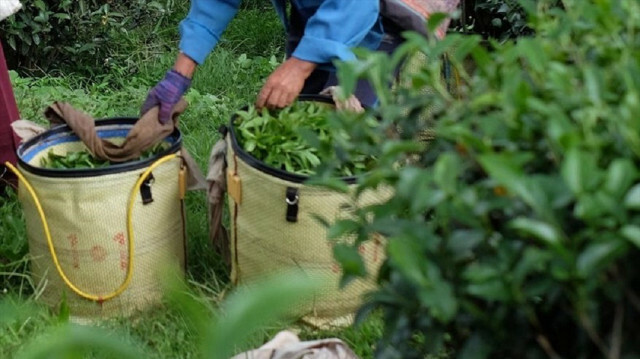
Highest production in 168 years raises hope for small farmers in plain land
The successive records of tea production has raised hope for thousands of farmers in Bangladesh amid the coronavirus pandemic, including farmers of plain land in the northern districts and border areas with neighboring India.
Bangladesh is witnessing record tea production in the nation’s 168 years history of producing tea since the country was known as East Bengal.
Last year, the south Asian country produced 90.65 million kilograms (200 million pounds) of tea and with a gradual high production in the last four years, according to the Bangladesh Tea Board.
It was 10.111 million kg higher than 2020. It was 96.069 million kg of tea in 2019, it added.
Hundreds of medium and small tea gardeners have had production success along with the major contributions of 167 big tea gardens and companies, opening a new opportunity for tea to be a strong export goods item amid challenges caused by the pandemic and solo dependency on the ready-made garment industry, said sector insiders.
- Tea gardening needs less effort, investment
The plain tea gardens and small plantations in the northern district alone contributed to a record 14.54 million kg in 2021 and 10.30 million kg in 2020, according to officials of the Bangladesh Tea Board.
President of Bangladesh Small Tea Garden Owners' Association Amirul Islam Khokon told Anadolu Agency that farmers can get instant cash against their goods in tea gardening like a vegetable farmer which offers a farmer good profit with comparatively less investment and effort.
“Tea gardening doesn’t claim a lot of fertile farming land or the mainland so it has created new opportunities for small farmers who have a small piece of land or a land which cannot be used for alternative crop cultivation,” he said.
Meanwhile, farmers who could not make a profit by conventional crop cultivation like rice, wheat, sugarcane, jute or losing their lands’ fertility to tobacco farming, are now being motivated to go into tea gardening, according to Khokon, who is also a small farmer in the northern district of Panchagarh.
- Bank loans, pricing remains challenge for farmers
Khokon said getting bank loans and a good price for teas remain challenges for small farmers, including growth.
“We are about 6,000 small farmers alone in the northern districts but only a handful of us get bank loans, commercial banks don’t show interest to provide loans to small farmers. Therefore, the government should raise its funds for farmers as it hardly meets our demand.”
Pricing, however, remains a problem for the plain land farmer, said farmers and officials.
One of the chief scientific officers at Bangladesh Tea Research Institute told Anadolu Agency that the group is working on high-yielding and quality varieties of tea plants, especially for the plain land as it is time to ensure a quality standard.
“Good leaf is considered to be plucked by seven to 10 days after it appears while farmers in northern districts used to delay it up to 35 to 40 days which reduced the quality and offered less price in the market. Therefore, farmers must shift their practice and get quality products,” said the official, who preferred to be unnamed.
He pointed to another challenge.
“Our lands are facing insufficient organic matters so we have to focus on it. We are addressing it by soil rehabilitation and soil carpeting for optimization cultivation.”
- Government continuous efforts for successive growth
The Chairman of the Bangladesh Tea Board, Major General Md Ashraful Islam, said the board in 2017 adopted a master plan to bring a comprehensive change in tea production and started witnessing rapid growth in production since 2018.
“Friendly weather and availability of water certainly helped to record production this year, including at the plain land in the northern districts and areas along the India border,” he told Anadolu Agency.
“We continue to provide support including fertilizers, incentives, quality plant distribution, irrigation facility and incentives to small farmers during the pandemic. Our research team also provides guidance for proper farming with regular communication until marginalized farmers,” he said. “We also helped ensure that the tea workers get paid well and farmers get fair prices for their products.”
“Apart from the 167 big tea gardens, garden plain lands largely shared in the record growth. They now account for about 15% of the total production; which we didn't think of some years ago,” he added.
If growth continues, he said the Board expects exports of 15 to 20 million kg by 2025, after meeting the domestic market demand of 90 million kg.
“And to reach the export goal, we have already focused on global branding and quality improvement as we will have to survive against the quality of neighboring India, Sri Lanka in the global market.”
“A new agricultural revolution is taking place in the northern districts and tea is leading the revolution,” the Tea Board Chairman said.

